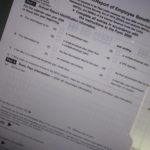The Internal Revenue Service has issued some updated Q&As explaining how it will notify employers that it intends to assess employer mandate penalties for 2015. The new Q&As (#55-58, set forth below) are part of a larger set of Questions and Answers on Employer Shared Responsibility Provisions Under the Affordable Care Act.
Tip for employers: be on the lookout for Letter 226J from the IRS, because if you receive one of these letters you have 30 days to respond. That will not leave you much time to consult with legal counsel and formulate a response. Failure to respond will make it difficult or impossible to contest the assessment of the penalties.
The new Q&As are set forth below:
- How does an employer know that it owes an employer shared responsibility payment?
The general procedures the IRS will use to propose and assess the employer shared responsibility payment are described in Letter 226J. The IRS plans to issue Letter 226J to an ALE if it determines that, for at least one month in the year, one or more of the ALE’s full-time employees was enrolled in a qualified health plan for which a premium tax credit was allowed (and the ALE did not qualify for an affordability safe harbor or other relief for the employee).
Letter 226J will include:
- a brief explanation of section 4980H,
- an employer shared responsibility payment summary table itemizing the proposed payment by month and indicating for each month if the liability is under section 4980H(a) or section 4980H(b) or neither,
- an explanation of the employer shared responsibility payment summary table,
- an employer shared responsibility response form, Form 14764, “ESRP Response”,
- an employee PTC list, Form 14765, “Employee Premium Tax Credit (PTC) List” which lists, by month, the ALE’s assessable full-time employees (individuals who for at least one month in the year were full-time employees allowed a premium tax credit and for whom the ALE did not qualify for an affordability safe harbor or other relief (see instructions for Forms 1094-C and 1095-C, Line 16), and the indicator codes, if any, the ALE reported on lines 14 and 16 of each assessable full-time employee’s Form 1095-C,
- a description of the actions the ALE should take if it agrees or disagrees with the proposed employer shared responsibility payment in Letter 226J, and
- a description of the actions the IRS will take if the ALE does not respond timely to Letter 226J.
The response to Letter 226J will be due by the response date shown on Letter 226J, which generally will be 30 days from the date of Letter 226J.
Letter 226J will contain the name and contact information of a specific IRS employee that the ALE should contact if the ALE has questions about the letter.
- Does an employer that receives a Letter 226J proposing an employer shared responsibility payment have an opportunity to respond to the IRS about the proposed payment, including requesting a pre-assessment conference with the IRS Office of Appeals?
Yes. ALEs will have an opportunity to respond to Letter 226J before any employer shared responsibility liability is assessed and notice and demand for payment is made. Letter 226J will provide instructions for how the ALE should respond in writing, either agreeing with the proposed employer shared responsibility payment or disagreeing with part or all or the proposed amount.
If the ALE responds to Letter 226J, the IRS will acknowledge the ALE’s response to Letter 226J with an appropriate version of Letter 227 (a series of five different letters that, in general, acknowledge the ALE’s response to Letter 226J and describe further actions the ALE may need to take). If, after receipt of Letter 227, the ALE disagrees with the proposed or revised employer shared responsibility payment, the ALE may request a pre-assessment conference with the IRS Office of Appeals. The ALE should follow the instructions provided in Letter 227 and Publication 5, Your Appeal Rights and How To Prepare a Protest if You Don’t Agree, for requesting a conference with the IRS Office of Appeals. A conference should be requested in writing by the response date shown on Letter 227, which generally will be 30 days from the date of Letter 227.
If the ALE does not respond to either Letter 226J or Letter 227, the IRS will assess the amount of the proposed employer shared responsibility payment and issue a notice and demand for payment, Notice CP 220J.
- How does an employer make an employer shared responsibility payment?
If, after correspondence between the ALE and the IRS or a conference with the IRS Office of Appeals, the IRS or IRS Office of Appeals determines that an ALE is liable for an employer shared responsibility payment, the IRS will assess the employer shared responsibility payment and issue a notice and demand for payment, Notice CP 220J. Notice CP 220J will include a summary of the employer shared responsibility payment and will reflect payments made, credits applied, and the balance due, if any. That notice will instruct the ALE how to make payment, if any. ALEs will not be required to include the employer shared responsibility payment on any tax return that they file or to make payment before notice and demand for payment. For payment options, such as entering into an installment agreement, refer to Publication 594, The IRS Collection Process.
- When does the IRS plan to begin notifying employers of potential employer shared responsibility payments?
For the 2015 calendar year, the IRS plans to issue Letter 226J informing ALEs of their potential liability for an employer shared responsibility payment, if any, in late 2017.
For purposes of Letter 226J, the IRS determination of whether an employer may be liable for an employer shared responsibility payment and the amount of the potential payment are based on information reported to the IRS on Forms 1094-C and 1095-C and information about full-time employees of the ALE that were allowed the premium tax credit.


 The U.S. Department of Labor’s Employee Benefits Security Administration, the IRS, and the Pension Benefit Guaranty Corporation (PBGC) have releasedadvance informational copies of the
The U.S. Department of Labor’s Employee Benefits Security Administration, the IRS, and the Pension Benefit Guaranty Corporation (PBGC) have releasedadvance informational copies of the